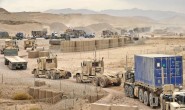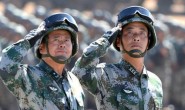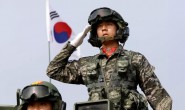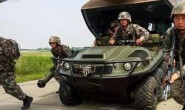中国对区域外力量投射型后勤的长期意向
关于在印度洋、南太平洋甚至南大西洋增设海外基地的猜测有很多。没有很好的证据表明他们的意图。人们必须从行为中推断出意图,但观察到的事实符合范围广泛的假设。
中国抵御封锁的能力
随着乌克兰冲突再次凸显,中国领导人必须预料到一场战争会对中国的对外贸易造成巨大破坏。即使美军没有像解放军作者假设的那样实施正式的军事封锁,美国的大规模制裁和激烈的冲突,也会产生大致相同的结果。很难评估几乎完全停止贸易,将如何影响在战争基础上运作的大陆规模经济体。中国的关键资源储备有多大?他们面对敌人的攻击时有多脆弱?如果严格的配给抵消了军事消耗的大幅增长,中国战时的消耗率会是多少?如果与俄罗斯保持友好,他们可以期望获得多少物资?如果不保持友好,又有多少?经济中断会在什么时候影响解放军的作战能力?
国防动员制度将如何运作
中国建立了一个精心设计的机构,来动员民间资源以支持军事行动。如果该系统按计划运行,它将提供数千辆卡车、轮船和飞机及其机组人员、数万名技术人员和机械师,以及数百万吨物资来补充解放军的后勤。我们才刚刚开始挖掘有关国防动员和民兵后勤网络的大量公开信息。初步研究记录了巨大的能力水平,以及该系统中存在许多未解决的挑战。关于“国防动员是人民战争的秘密武器”这一观点,它是大大增加了解放军保障能力的秘密武器,还是会在真正的冲突中崩溃的、巨大的鲁布-戈德堡装置?目前的研究还没有能力来做出任何有依据的判断。这个问题是解放军研究中最重要的未解问题之一。
建议
越来越多的论文和会议开始关注解放军后勤,这点令人鼓舞,但这些努力尚未有质的突破。使后勤成为如此重要话题的关键问题仍未得到解答,因此尚不清楚解放军今天能否在靠近中国的地区进行大规模战争,以及在可预见的未来是否能够在远离中国的地区打一场中等规模的战争。俄罗斯军队在乌克兰出人意料的战争,凸显了这个问题的重要性。因为许多人认为,世界上最强大的军队之一的表现严重不佳,部分原因是后勤不善。美国和中国自己都需要密切关注中国军事后勤在类似压力下的表现。
解放军如何能很好地持续保障靠近中国的大规模冲突?这需要超越解放军的建制后勤能力,就像中国人自己说的一样,将其视为全社会的人民战争事业。这需要更深入地研究国防动员委员会、解放军省级军区(PMD)系统以及直接参与解放军机动行动后勤保障的民兵力量。除了参与南海和东海任务的海上民兵部队外,目前研究中国民兵的热情还不高。与弹道导弹、战斗机和两栖机械化合成兵种旅相比,民兵规模庞大、分散、多样化,而且老实说很乏味。如果要真正专业地研究后勤,那么观察家们就不能忽视驻扎在省军区系统和民兵部队中的解放军后勤的庞大组成部分。
幸运的是,中国为军事行动动员民间支持的机构,就其性质而言,必须公开存在,且与之互动的经济实体是可见的。因此对美国和其他国家来说,在一定程度上,这些信息也是可见的。问题不在于寻找数据,而在于如何处理大量低价值数据,以形成清晰的画面。(江晓博/编译 知远战略与防务研究所)
【1】US Naval War College/China Maritime Studies Institute, Quick Look Report: Large-Scale Amphibious Warfare in Chinese Military Strategy (Newport, RI: US Naval War College, 2021)
【2】China’s Military Power Projection and U.S. National Interests: Hearings before the US-China Economic and Security Review Commission, 116th Cong. (2020)
【3】Joel Wuthnow, “Joint Logistics Force Support to Theater Commands,” in PLA Logistics and Sustainment: PLA Conference 2022, ed. George R. Shatzer and Roger D. Cliff (Carlisle, PA: US Army War College Press, 2023); and Joshua Arostegui and James R. (J. R.) Sessions, “PLA Army Logistics,” in PLA Logistics and Sustainment: PLA Conference 2022, ed. George R. Shatzer and Roger D. Cliff (Carlisle, PA: US Army War College Press, 2023).
【4】Erin Richter and Benjamin Rosen, “China’s National Defense Mobilization System: Foundation for Military Logistics,” in PLA Logistics and Sustainment: PLA Conference 2022, ed. George R. Shatzer and Roger D. Cliff (Carlisle, PA: US Army War College Press, 2023); Devin Thorne, Inside China’s National Defense Mobilization Reform: Capacity Surveys, Mobilization Resources, and “New-type” Militias (Washington, DC: Recorded Future Insikt Group, March 10, 2022)
【5】Alex Stone and Peter Wood, China’s Military-Civil Fusion Strategy: A View from Chinese Strategists(Montgomery, AL: China Aerospace Studies Institute/US Air University, 2020)
【6】Conor M. Kennedy, Civil Transport in PLA Power Projection, China Maritime Report No. 4 (Montgomery, AL: China Maritime Studies Institute/US Air University, 2019); J. Michael Dahm, Chinese Ferry Tales: The PLA’s Use of Civilian Shipping in Support of Over-the-shore Logistics, China Maritime Report No. 16 (Montgomery, AL: China Maritime Studies Institute/US Air University, 2021); and Chung Chieh and Andrew N. D. Yang, “Crossing the Strait: Recent Trends in PLA ‘Strategic Delivery’ Capabilities,” in The PLA Beyond Borders: Chinese Military Operations in Regional and Global Context, ed. Joel Wuthnow et al. (Washington, DC: National Defense University Press, 2021).
【7】Isaac B. Kardon, “China’s Overseas Base, Places, and Far Seas Logistics,” in The PLA Beyond Borders: Chinese Military Operations in Regional and Global Context, ed. Joel Wuthnow et al. (Washington, DC: National Defense University Press, 2021); Rayan V. Bhagwagar, “China’s Overseas Military Bases,” Modern Diplomacy (website), August 31, 2020
【8】Phillip C. Saunders, “Command and Control of Overseas Operations in a Reformed PLA,” in The PLA Beyond Borders: Chinese Military Operations in Regional and Global Context, ed. Joel Wuthnow et al. (Washington, DC: National Defense University Press, 2021).
【9】Bonny Lin, Brian Hart, and Matthew P. Funaiole, “The PLA’s Growing Airpower Projection Capabilities in the Western Theater Command,” in PLA Logistics and Sustainment: PLA Conference 2022, ed. George R. Shatzer and Roger D. Cliff (Carlisle, PA: US Army War College Press, 2023); Center for Strategic and International Studies (CSIS), “How Is China Expanding Its Infrastructure to Project Power along Its Western Borders?,” China Power Project (website), May 2022
【10】James E. Fanell, “China’s Global Navy: Today’s Challenge for the United States and the U.S. Navy,” Naval War College Review 73, no. 4 (2020); How Xi Jinping’s ‘New Era’ Should Have Ended U.S. Debate on Beijing’s Ambitions: Hearing before the US-China Economic and Security Review Commission, 116th Cong. (statement of Daniel Tobin, China Studies faculty, National Defense University, March 2020)
【11】China’s Logistic Support to Expeditionary Operations: Hearing before the US-China Economic and Security Review Commission, 116th Cong. (statement of Kevin McCauley, February 20, 2020);Conor M. Kennedy, Civil Transport in PLA Power Projection, China Maritime Report No. 4 (Newport, RI: China Maritime Studies Institute/ US Naval War College, December 2019); and Lonnie D. Henley, Civilian Shipping and Maritime Militia: The Logistics Backbone of a Taiwan Invasion, China Maritime Report No. 21 (Newport, RI: US Naval War College, 2022)
【12】David M. Finkelstein, “Breaking the Paradigm: Drivers behind the PLA’s Current Period of Reform,” in Phillip C. Saunders et al., eds., Chairman Xi Remakes the PLA: Assessing Chinese Military Reforms (Washington, DC: National Defense University Press, 2019); and Joel Wuthnow, “Joint Logistics Force Support to Theater Commands,” in PLA Logistics and Sustainment: PLA Conference 2022, ed. George R. Shatzer and Roger D. Cliff (Carlisle, PA: US Army War College Press, 2023).
转载请注明:北纬40° » 美军对解放军的后勤了解多少?



